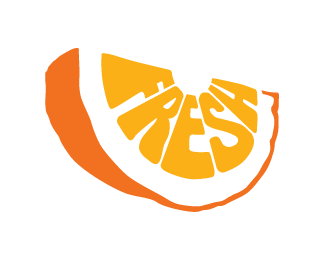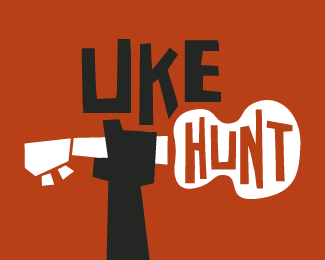- This topic has 1,701 replies, 122 voices, and was last updated 12 years ago by TandemJeremy.
-
Clever logo… (well I thought so anyway)
-
stilltortoiseFree MemberPosted 12 years ago
TJ is opening up quite a significant lead now
Really? From where I’m sat all he’s doing is picking off the low-hanging fruit. It all reached new lows when the dreaded word “semantics” was used back on page 476. From there on in there was never going to be a “victor” in this…
…which on the positive side means it may well get to 1,000 posts. Keep it up. I’ll check in later 🙂
hilldodgerFree MemberPosted 12 years agoTandemJeremy – Member
Indeed more than that – you only know its a north arrow if you know its a garmin and you are looking for significance.
So this very clever bit of graphics / logo work actually has been shown to add nothing to the basic word. The only people who know what it is are those who already know what a garmin is and are the sort of people who look for these things.disclaimer- Please take these comments as personal opinion rather than :teh fact:
OK, The Garmin thing – there aren’t that many manufacturers of hand held GPS are there ?
So I would think their target audience do know what a GPS is (and does), use maps quite a bit, and are used to associating an upper case ‘N’ as a symbol for north.
I also find it very hard to imagine anyone who is map’n’compass savvy who would not automatically think ‘N = north’ irrespective of an arrow of any colour.
So in this case I would imagine the strategy is to reinforce ‘the brand’ before significant competition enters the market, and I suspect that garmin would like to ‘do a hoover’ by becoming a generic term for ‘outdoors use hand held GPS device’.TandemJeremyFree MemberPosted 12 years agoTJ
One of the issues here throughout this thread has been poorly defined terms and word that we take to mean different things.thats why the use of words such as subconcious are not useful. its a word with no definition. everyone thinks they know what it is = no one can define it
GrahamSFull MemberPosted 12 years agoI’m guessing that GrahamS has a better idea of what he believes than does TJ.
Exactly. His “opinion” has no basis in fact, since he does not have access to my thoughts to gauge how strong my belief in the effectiveness of this stuff, nor access to advertising research figures to report on the true effectiveness.
nedrapierFull MemberPosted 12 years agoTJ is opening up quite a significant lead now.. he’s gonna romp home with this if you guys aren’t careful
If by that, you mean he’s still going to be here when all the sensible people have left having seen him detatch himself from arguments he’s losing, then you’re probably right.
WoodyFree MemberPosted 12 years agoWhat amazes me is that people are prepared to carry on arguing about something of relatively little importance for this length of time.
Does anyone really care how much (or little) TJ is affected by marketing/branding/logos. I know I don’t care one jot and I’m fairly certain that how my buying habits affected are of no interest to him.
Once again, it’s a potentially interesting thread (which is still interesting if you have the time to sift the posts) bogged down in a deathly spiral of incrimination, minutaie, nanopoint scoring and finally exasperated insults.
I think I’ll go and herd some cats.
JunkyardFree MemberPosted 12 years agohttp://hbswk.hbs.edu/topics/all-brandmanagement.html
here some actual research from DrJ oddly the first one i started reading why global brands work
http://hbswk.hbs.edu/item/5800.html – by a professotr had this as point 55. Social responsibility. Consumers expect global brands to lead on corporate social responsibility, leveraging their technology to solve the world’s problems. Think Nestlé and clean water.
His brand just died for me tbh as I think his judgement is flawed just by claiming they are a social responsible company. I think you may have a point about brands and them “helping” me form opinions etc.
I will read some more as i suspect i will learn far more from there thna another 20 pages of this.
Militant_bikerFull MemberPosted 12 years agoMorning!*
I read a paper, well a couple actually. The best sounding one was unavailable on t’wifes uni access. 🙁
A summary of the more relevant ones;
1) All Dressed up with Something to Say: Effects of Typeface Semantic Associations on Brand Perceptions and Consumer Memory
Author(s): Terry L. Childers and Jeffrey Jass
Source: Journal of Consumer Psychology, Vol. 12, No. 2 (2002), pp. 93-106Sample size 96 undergraduates.
Research from information design and marketing has demonstrated that individuals are capable of perceiving consistent meaning in typefaces… (Bartram, 1982; Rowe 1982; Tantillo, Lorenzo-Aiss, + Mathisen, 1995; Walker Smith, + Livingston, 1986)
General Discussion and Conclusions
Taken together, the results of the two experiments provide evidence that typefaces convey meanings that have the potential to significantly influence important marketing constructs.[quote]Semantic associations may be activated via one of three paths to meaning, or some combination of these three paths, including (a) through consistent use in a particular situation, (b) through a direct relations with the perceptual qualities generated by the visual patterning of the stimulus, and/or (c) via associations with abstract connotative dimensions[/quote]
In a marketing context, for example, a typeface that is used consistently to represent a brand name may acquire a number of diverse semantic associations which become centered on the meaning of the brand
2) Quantifying Perceived Differences in Type Styles: An Exploratory Study
Author(s): John Tantillo, Janet Di Lorenzo-Aiss and Richard E. Mathisen
Source: Psychology + Marketing, Vol. 12, No. 5 (1995) pp. 447-457Sample size – 250. Subjects, undergraduate and graduate students. 56% female, 44% male, average age 24.4 years.
The study found that [subjects] perceived affective differences among the six most frequently used type styles and among the serif and sans serif taxonomy. Thus from the point of view of advertising practitioners, differences in type-style selection are important
Care to produce any counter evidence TandemJeremy 😉
*It’s 9am here 😉
molgripsFree MemberPosted 12 years agoWhat amazes me is that people are prepared to carry on arguing about something of relatively little importance for this length of time
It’s not about how affected he is.
1) he used derogatory language for those of us who are affected, me inluded
2) he rubbished my arguments based on misconceptions, which as an arguer is extremely frustrating.
3) he then refused to accept misconceptions by giving reasons based on even more misconceptions, which drove me up the wall.WoodyFree MemberPosted 12 years agoMolgrips
I know I know I know I know I know I know……
….but sometimes you win by just walking into the distance……………..
 stilltortoiseFree MemberPosted 12 years ago
stilltortoiseFree MemberPosted 12 years agoBefore I go – and to ensure TJ doesn’t have more low-hanging fruit – let’s drop the Garmin example. It is pants. I can use a map and compass. I was a boy scout. I know what Garmin make. I never noticed the triangle and never associated it with the north arrow on a compass.
I also never noticed the arrow in FedEx.
Amazon? A to Z smile? What??!
I’m sure me, TJ and countless others will see these examples as nothing more than interesting anecdotes to
boreamaze someone with in the pub. However I absolutely and categorically will state that I do believe that branding – or whatever word we’re using to define what we’re arguing about – can be effective. Aren’t we all saying that now? Aren’t we just arguing about how effective it is. Can this really ever reach a (happy) conclusion? Absolutely not. I suggest we all take a breather, continue towards the 1,000 mark but inject a bit of humour back into this to attract the casual visitors back.Sadly I can think of nothing funny to add at this stage. Sorry 😀
GrahamSFull MemberPosted 12 years agoI very rarely dream?
Really? What the hell is wrong with you man?
– you don’t dream.
– colours have no meaning.
– drawing and symbols are just pointless shapes.
– fonts and styles convey no information to you.
– you find any twiddly bits “winky” and would prefer everything to be plain.There must be a name for this condition.
Surely someone in the STW massif can help him?Right – I have important stuff to do. See you later
Right, anyone want to have a grown-up discussion about the “innocent” case study a page or so back?
hilldodgerFree MemberPosted 12 years agomastiles_fanylion – Member
I simply liked the subtle arrow (yes it is subtle, people don’t always see it – I have seen the logo many times and only just spotted it and that was the thrust of my original post).
So, as a brand the Garmin ‘North Pointer’ isn’t the best example of brand communication but I never said it was. I just liked the subtle execution of the *LOGO*.
If all the belligerence and posturing could settle down, there are some interesting points to discuss – in particular the difference between ‘seeing’ and ‘noticing’.
In general non-peer reviewed terms, ‘we’ are only aware of about 10% of the information our sensory apparatus receive, that 10% is a dynamic fraction (i.e. it shifts between all the possible 10%s of your total environmental inputs) and is influenced by many factors, most of which are still poorly defined.Common examples are ‘the cocktail party effect’ where amidst a hubbub of random chit chat you will pick out clearly someone saying your name or suddenly seeing things ‘out of the corner of your eye’ while concentrating on looking at a screen, book etc.
In cognitive jargon it’s “Perception Vs Reception” and for anyone to claim they are in any way fully conscious/aware/in control of what images/sounds/sensations they respond to is either disingenuous or ignorance…….
philconsequenceFree MemberPosted 12 years agonever really dreaming is a side-effect of regular cannabis consumption.
not finding beauty in colours, shapes and pretty images however is a side effect of being boring.
i wonder if TJ dreams of electric sheep?
GrahamSFull MemberPosted 12 years agoAmazon? A to Z smile? What??!
it’s a nice one, and again not one you necessarily “get” straight away unless it is pointed out:

The “orange bit” is an arrow going from A-to-Z, and it can also be seen as a nice happy smile.
DenDennisFree MemberPosted 12 years agoTandemJeremy – Member
TJ
One of the issues here throughout this thread has been poorly defined terms and word that we take to mean different things.thats why the use of words such as subconcious are not useful. its a word with no definition. everyone thinks they know what it is = no one can define it
agreed. lots of life is subjective. that’s the beauty of it.
In this context, by subconscious I would say ‘thoughts going on in the dark recesses of your brain that you are not aware of’and those are the parts that a lot of logo/brand/marketing attempts to tap into.
if you are truly immune to such an effect TJ, then I salute you.
whats more, I shall contact the CIA in due course.nedrapierFull MemberPosted 12 years agoInteresting, hilldodger.
Another example of just how much information we process without being consciously aware of it: You walk into your living room, and if there’s a dark spot in the far corner of the ceiling, you’ll often spot it instantly.
In a split second, you’ve scanned the entire room, and compared it to the image of this room stored in your brain. How many mental images have we got stored, of familiar and places?
Even of unfamiliar places, sometimes you’ll feel nervy because something’s not right about a situation. You might not spot it instantly, but part of your brain, one of the bits which you don’t use for conscious thought, is alerting you to be on the lookout for something. Often you’ll then spot it and work out what to do about it.
And if some things can make you feel uncomfortable without you making a conscious evaluation about it, some things must be abble to do the opposite?
molgripsFree MemberPosted 12 years agoThis thread would’ve been great if TJ hadn’t waded in. Lots of interesting and intelligent posts 🙂
Molgrips
I know I know I know I know I know I know……
….but sometimes you win by just walking into the distance……………..
Yeah, I’ve closed all threads apart from the TdF one. And then I came back to check here.. damn!
colonelwaxFree MemberPosted 12 years agoAnalgesic effects of branding in treatment of headaches
Citation:British Medical Journal, 1981, vol./is. 282/6276(1576-1578), 0959-8146
Author(s):Branthwaite A.,Cooper P.
Abstract:The effect of branding – that is, labelling and marketing – of a well-known proprietary analgesic used to treat headaches was studied in a sample of women given a branded or unbranded form with either an inert or an active formulation. The sample was also divided according to whether the subjects were regular users of the brand or users of other brands. The findings showed that branded tablets were overall significantly more effective than unbranded tablets in relieving headaches. Differential effects were observed: the effects of branding were more noticeable one hour after the tablets were taken compared with 30 minutes; in the women given the placebo; and in the users of the brand compared with the users of other brands. It is hypothesized that these effects are due to increased confidence in obtaining relief with a well-known brand, and that branding has an analgesic effect that interacts with the analgesic effects of placebos and active ingredients.
JunkyardFree MemberPosted 12 years agoAren’t we just arguing about how effective it is
pretty much now
Right, anyone want to have a grown-up discussion about the “innocent” case study a page or so back?
no **** OFF 😉
http://www.singletrackworld.com/forum/topic/clever-logo-well-i-thought-so-anyway/page/37#post-2788693 to save them searching
I think it is a good name that conveys it is the opposite of Sunny D – presumably part of the reason for the name.it is clever to link into “green” credentials and health aspects with the drink – innocent – not fizzy and no rubbish in it [ no idea re ingredients never had one as I make my own smoothies.] which are all clever and reinforce the idea of the juice being pure and good for you.I think the use of the meet the family for the sizes – everyone associates family in a nice way – is very clever to promote them as fun and friendly and just like you [ or how we want to be seen]
Pretty good tbh and also more blatant than Garmin and yet also subtle. It is almost like the marketing came first and then they invented the product. Very clever.Of course, if the drinks were bogging then none of that would work very well. But the foundations of “the innocent brand” are set up by those images and texts, probably before you’ve even tried the drink.
yes it is a good brand image for the current market.
colonelwaxFree MemberPosted 12 years agoThe marketer’s prismatic palette: Essays on the importance of color in marketing with implications for brand personality
Citation:Dissertation Abstracts International Section A: Humanities and Social Sciences, 2011, vol./is. 71/7-A(2549), 0419-4209 (2011)
Author(s):Labrecque, Lauren Isabelle
Abstract:Color is important not only in terms of aesthetics but also because it carries meanings that can influence affect and behavior. People’s daily experiences are saturated with color, however scant research focuses on the influence of color in marketing. Essay one of this dissertation offers a conceptual model that provides a framework for understanding how people experience and create meaning from color in order to contribute to a better understanding of how color affects consumer behavior. Additionally, it provides a review of color research in different areas of marketing. This review brings attention to areas where more empirical research is needed and also provides research questions and directions for future study. Essay two examines the role that color plays in branding and fills a major gap in the brand personality literature by empirically testing how nonverbal elements contribute to the establishment of and shape brand personality (Batra, Lehmann, and Singh 1993). In addition, this essay fills a gap in the branding literature by examining the brand-building qualities of logos (Keller and Lehmann 2006). Based on color theory and previous empirical work in psychology and marketing, the relationship between color and brand personality (Aaker 1997), and color and brand equity is tested in a series of five studies. Study 1 demonstrates the link between hue and brand personality using two fictitious and two real brand logos. Study 2 further examines the relationship by focusing on the other two components of color, saturation and value, using four fictitious brand logos. Together, these studies show that all three components affect brand personality perceptions. Study 3 offers replication and extends these findings to package design. Study 4 shows the incremental value of color in logo design, using one hundred real brand logos. Results show that color is an important driver of brand personality and that the combination of logo design and color influences likability and familiarity. Lastly, the relationship between color and brand equity is examined in Study 5. The results provide evidence of product category color norms and reveal that while color differentiation may be helpful for certain categories, it may hurt others. (PsycINFO Database Record (c) 2011 APA, all rights reserved)
colonelwaxFree MemberPosted 12 years agoConsumer preference for logo designs: Visual design and meaning.
Citation:Dissertation Abstracts International Section A: Humanities and Social Sciences, 10 1997, vol./is. 58/4-A(1372), 0419-4209 (Oct 1997)
Author(s):Pimentel, Ronald WardAbstract:Logo designs provide a quick visual shorthand for all the meaning, associations, and equity associated with a brand. Virtually all major companies utilize logos, but there is little theory-based research regarding logo design published in marketing and consumer behavior journals. Related research from psychology regarding preference for visual images has generally used special stimuli created for the laboratory that do not carry the meaning that logos acquire in the markerplace and consequently have very limited generalizability. This study seeks to begin to fill the void by examining preference for actual, familiar logo designs. An improved understanding of preference for logo designs can be a great advantage to a company considering a logo design change. The costs involved in such a change can be enormous. Beyond the cost of the services of graphic designers, a change in logo design incurs the cost of changing everything that displays the logo, and any lost sales that may result if the new design is ineffective in some way. The equity of the brand may be connected to the logo design, so a change in the design of the logo may have long-term implications. Many logos have evolved over the years through successive changes to keep the designs from becoming outdated. This study examined theoretical bases for such activity. According to adaptation-level theory (McClelland et al. 1953), individuals become adapted to an object or image due to experience with it. Slight changes to this adaptation level result in increased preference while drastic changes result in decreased preference. These effects are represented by the distinctive butterfly curve. The current study developed a technique that allows for differentiation of visual designs, indicating the degree of change. This was used to test whether adaptation-level theory applies to familiar logo designs. The results indicate a general preference for no changes in familiar logo designs. While practitioners make changes i (PsycINFO Database Record (c) 2010 APA, all rights reserved)
colonelwaxFree MemberPosted 12 years agoBrand name logo recognition of fast food and healthy food among children.
Citation:Journal of Community Health, Feb 2009, vol./is. 34/1(73-8), 0094-5145;0094-5145 (2009 Feb
Author(s):Arredondo E,Castaneda D,Elder JP,Slymen D,Dozier D
Abstract:The fast food industry has been increasingly criticized for creating brand loyalty in young consumers. Food marketers are well versed in reaching children and youth given the importance of brand loyalty on future food purchasing behavior. In addition, food marketers are increasingly targeting the Hispanic population given their growing spending power. The fast food industry is among the leaders in reaching youth and ethnic minorities through their marketing efforts. The primary objective of this study was to determine if young children recognized fast food restaurant logos at a higher rate than other food brands. Methods Children (n = 155; 53% male; 87% Hispanic) ages 4-8 years were recruited from elementary schools and asked to match 10 logo cards to products depicted on a game board. Parents completed a survey assessing demographic and psychosocial characteristics associated with a healthy lifestyle in the home. Results Older children and children who were overweight were significantly more likely to recognize fast food restaurant logos than other food logos. Moreover, parents’ psychosocial and socio-demographic characteristics were associated with the type of food logo recognized by the children. Conclusions Children’s high recognition of fast food restaurant logos may reflect greater exposure to fast food advertisements. Families’ socio-demographic characteristics play a role in children’s recognition of food logos.
colonelwaxFree MemberPosted 12 years agoWhat Does Your Logo Really Tell Consumers?
Citation: Harvard Business Review, 01 December 2010, vol./is. 88/12(30-), 00178012Publication Date: 01 December 2010
Abstract: The article discusses corporate logos. Research by Niels van Quaquebeke and Steffen Giessner of the Rotterdam School of Management found that people are more likely to assume ethical behavior on the part of firms with symmetrical logos than they are with companies whose logos are asymmetrical. It is noted that retailer Gap Inc. withdrew a redesigned logo that met with much criticism.
GrahamSFull MemberPosted 12 years agonot fizzy and no rubbish in it [ no idea re ingredients never had one as I make my own smoothies.]
That may be one of those rare “adverts giving genuine information” things mentioned earlier.
They do seem to be made from fruit and nothing else (according to the published ingredients anyways). It’s a key point of their brand so I suspect they are quite careful around that area.
The assertion that drinking pure fruit juice is 100% good for you is a arguably a bit more sly (due to the huge amount of calories) and a nutritionist may argue whether it really counts towards your 5-a-day. But it’s definitely better for you than Sunny D. 😀
colonelwaxFree MemberPosted 12 years agoThe mere exposure effect and product choice: A field experiment.
Author(s): Bluher, Romy, Pahl, SabineCitation: Zeitschrift fur Sozialpsychologie, September 2007, vol./is. 38/3(209-215), 0044-3514 (Sep 2007)
Publication Date: September 2007
Abstract: The “mere exposure” effect denotes positive attitude change toward a stimulus after repeated exposure to that stimulus (Zajonc, 1968). The present study investigated whether mere exposure also affects actual choice behavior. Participants named landmarks shown on photographs. In two experimental conditions, the photographs also unobtrusively showed posters depicting the logo of either a lemon candy or a peppermint candy; in a control condition, no posters were shown. Later participants could choose between the two products as a reward. Participants who had been exposed to the lemon logo and control participants chose the lemon candy more frequently, whereas for participants who had been exposed to the peppermint logo, this preference reversed: they chose the peppermint candy more frequently. Theoretical and applied implications are discussed.
GrahamSFull MemberPosted 12 years ago(All good stuff colonel_wax, but I suspect TJ will either conveniently ignore it or find some convoluted reason to dismiss it all)
molgripsFree MemberPosted 12 years agoInterestingly, GrahamS, because it’s quite pulpy it would seem to have a lower GI (it says it’s low GI on the box – this must be a verifiable claim surely?) which would make it much better for you than drinking fruit juice.
Colonel Wax – thanks for those things, it’s nice to be vindicated 🙂
colonelwaxFree MemberPosted 12 years agoisual and Verbal Communication in the Design of Eco-Label for Green Consumer Products.
Author(s): Tang, Esther, Fryxell, Gerald E, Chow, Clement S. FCitation: Journal of International Consumer Marketing, 2004, vol./is. 16/4(85-105), 0896-1530;1528-7068 (2004)
Publication Date: 2004
Abstract: Eco-labels are meant to convey information to consumers about the environmental implications of purchasing the product, so that consumers who care about such effects can express their desires in the market. Whereas all eco-label designs utilize a visual logo, only a few of them include verbal message within the label to communicate the main reason why the label is granted. As such, the purpose of this study is to investigate the influence of visual and verbal communication in eco-label designs on consumers purchasing behavior. Using an experimental design with homogenous sample, participants were randomly assigned one of four possible treatments in a 2 x 2 design with manipulations of both visual and verbal communication cues within a simulated web-based shopping experience. It was found that both the visual and verbal communication had significant individual and additive effects on the purchase of the designated products.
colonelwaxFree MemberPosted 12 years agoThe implicit conditioning of consumer attitudes: Logo substitution effect.
Author(s): Ohme, Rafal KCitation: Polish Psychological Bulletin, 2001, vol./is. 32/1(71-78), 0079-2993;1641-7844 (2001)
Publication Date: 2001
Abstract: The notion of the unawareness of influence posits that people are often not aware of the determining influences on their judgments or subjective feeling states. This led to research on implicit consumer behavior, an area of the applied psychology of unconscious processes. This study compares explicit and implicit processes of attitude conditioning toward Carrefour supermarkets and McDonald’s fast food bars. It introduces an idea of a logo substitute: a formally similar graphic image that conserves features of the original logo, but otherwise is not consciously recognized or identified as the logo. The experimental settings drew an operational distinction between explicit and implicit influences. It was established that replacing of the original logo with its substitute was an effective method of attitude change in consumers. Moreover, the studies raised interesting observations: (1) implicit persuasion manipulation resulted in significant attitude change, while no such findings were found in the explicit condition; and (2) more significant changes were produced by the logo substitute of a less known Carrefour logo. The general findings are discussed in terms of the model of central and peripheral persuasion extended to visual persuasive stimuli.
colonelwaxFree MemberPosted 12 years agoOk off to do some work now, feel free to use those abstracts as you wish 😀
Oh, they’re from Embase, Medline, PsychInfo, Cinahl so should be reasonable.
GrahamSFull MemberPosted 12 years agoInterestingly, GrahamS, because it’s quite pulpy it would seem to have a lower GI (it says it’s low GI on the box – this must be a verifiable claim surely?) which would make it much better for you than drinking fruit juice.
Yeah probably. They make non-smoothie fruit juices too though.
Regardless of the GI they are still a fairly hefty amount of calories.
Fair play though, they actually acknowledge this stuff and discuss it at:
http://health.innocentdrinks.co.uk/molgripsFree MemberPosted 12 years agoFair play though, they actually acknowledge this stuff and discuss it at:
http://health.innocentdrinks.co.uk/Yeah.. that’s a positive thing for their brand…!
The topic ‘Clever logo… (well I thought so anyway)’ is closed to new replies.










